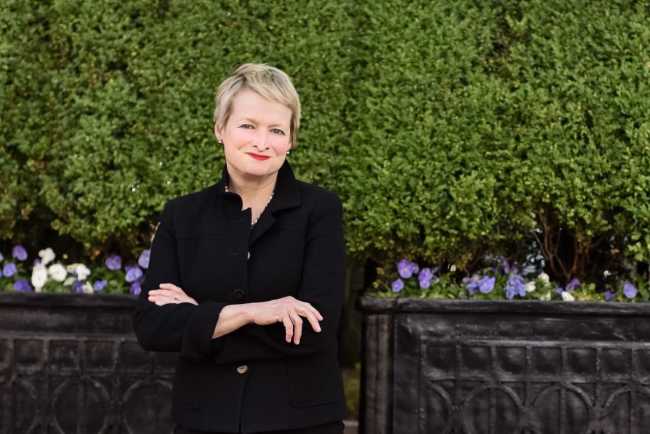
Extra! Extra! The contemporary newspaper business has been beaten down by unbundling! We know the story all-too-well: Back in the era of the integrated newspaper, the profitable parts (classifieds and ads) paid for the less-profitable-but-necessary parts (local government reportage or, say, books coverage). Then the internet and social media crashed the party and appropriated what it could—you know what we’re talking about, Craigslist—and papers were no longer the central information platform for readers.
As Alan Rusbridger, former editor of The Guardian, told us on the Resonance Test podcast: “Virtually everywhere in the world, newspaper circulations are in permanent decline. Digital things are in permanent ascent.”
The New York Times provides a recent example of this dynamic, in the saga of game called Wordle, the “digital lovechild… of Mastermind and Hangman.” This tale shows how the Times has adapted and is rebundling itself as a subscription-based, digitally focused organization—one that understands, at a systems level, the interconnections between readers’ sentiments, the editorial features they seek, the digital communities in which they live, and the market value of such.
The Wordle Saga shows the Times has adapted and is rebundling itself as a subscription-based, digitally focused organization.
Our story starts on January 3, when a reporter named Daniel Victor told the world how a modest, Brooklyn-based software engineer named Josh Wardle created a word game for his partner, Palak Shah. The piece noted that 90 people wordled on November 1. That number jumped to 300,000 in two months. After the story hit, things went berserk; millions played, every single day. On January 31, the Times paid Wardle “in the low seven figures” for Wordle.
Since then, many an article has speculated on why Wordle is so addictive. (Ian Bogost’s four-part guess is typical.) We read these, think of Wardle, perhaps frown at the inevitable Wordle paywall, and keep playing. But the time has come to consider the various factors that enabled the Times to act so decisively.
Quickly Becoming the Essential Subscription
First off, this happened unusually fast. As Peter Senge, the Josh Wardle of systems thinking and author of The Fifth Discipline, says: “Revolutions always start with small numbers,” adding that “the real changes always start on the periphery of the mainstream and then over long periods of time gradually penetrate the mainstream.” We’re talking, let’s recall, about upgrading to an audience of millions in 28 days.
Wordle’s freakish success was, it seems, part of the Times’ strategy to move away from advertising and toward subscriptions.
“Since The Times put up a paywall in 2011, its business strategy has revolved around persuading readers and users, the overwhelming majority of whom get Times content digitally, to buy subscriptions,” writes Marc Tracy, in a piece announcing the Wordle deal. Subscribers can pay for access to all of the Times, or can choose to pay for access to, say, the cooking or games sections or Wirecutter, the consumer-guide site the Times acquired in 2016.

Which is to say: The Times has successfully transformed itself into a digital ecosystem. In fact, the Times just announced that they now attained 10 million subscribers (a number they had originally planned to reach by 2025), thanks to the recent acquisition of a sports site called The Athletic and its 1.2 million subscribers.
Love Scales
A big reason so many people tried out Wordle is because of the lovey-dovey framing Daniel Victor placed around his article, a valentine some computer guy coded for his loved one. “It’s really sweet,” said Shah. “This is definitely how Josh shows his love.” Wardle put it online and made it simple and free and open. Readers succumbed to the tale’s noble sentiments, which drove many of us, including the person typing this, to try the game ourselves.
The Times may not have the authority it used to possess (name a legacy newspaper that does!) but it does have a huge readership and it is a world-leader in positive human-interest stories—the sharing of which has real benefits. In fact, “Modern Love,” their ongoing saga about the million varieties of romance out there, is quite reliable and popular. Seventeen-years-old now, the feature has mutated into a book, podcast, and TV series.
The point is: Love scales, and there’s no doubt the title of Victor’s piece alone, “Wordle Is a Love Story,” helped scale the game.
Love scales, and there’s no doubt the title of the piece alone, “Wordle Is a Love Story,” helped scale the game.
Much Data, No Delay, Big Payday
Another element to this story is data. We don’t know how the Times crunched the numbers of the Wordle investment, but they surely know exactly how many people read Victor’s original piece. A quick look at the trending stories page on February 6 revealed that the piece about the Times’ acquisition of Wordle was the most popular article the previous week (with Victor’s initial piece still in the mix of top reads).
Add into the mix the findings of a “decision intelligence” firm called Morning Consult that reported, on January 20, that 14 percent of US adults have played the game. Josh Wardle, of course, knows how many millions of times his game was played and surely shared every last data point with the Times before selling.
Let’s also recall the tantalizingly unspecific number, “in the low seven figures,” that Wardle was paid. However they got to that number, it is a sure reflection of the value of games to the Times, which reports that their games were accessed 500 million times in 2021. They’re not playing around. According to a statement from the company: “The Times remains focused on becoming the essential subscription for every English-speaking person seeking to understand and engage with the world. New York Times Games are a key part of that strategy.”
In fact, it seems natural for the Times to fold Wordle into their enormous ecosystem of content and community. Wardle said, on Twitter, regarding the game’s crazy success: “I’d be lying if I said that this hasn’t been a little overwhelming” and that “I’ve long admired the NYT’s approach to their games and the respect with which they treat their players.”
Could Wordle Be a Model?
The Gray Lady couldn’t have imagined the ending of this story when it first began. And now that it’s happened, she likely can’t stop thinking about it. The formula seems clear: (1) bring together people doing cool things online, for love, and tell their sweet contextual stories; (2) track the influence the story exerts and asses the size of the opportunity; and (3) if this sparks enough popularity and promises sufficient value, the paper should buy it and make it part of the subscription package.
Could the Times do this again? Would it be wise to try? If so, they’d need to be pretty careful.
Let’s say the Times created a regular column, maybe by Daniel Victor, featuring sentimental stories about up-and-coming digital activity. Might the Times be inclined to do some subtle logrolling, whether consciously or unconsciously, in the hopes of goosing the outcome of the next Wordle?
The question is: How adaptive can the Times get?
It’s a danger. An uneven journalistic hand could easily raise the ire of Twitter, or make readers, particularly those who love Wordle, feel their trust has been violated. As Rusbridger says, the idea of a “passive audience just waiting for the news to be handed down to them, is disappearing… especially amongst younger readers,” who are ready and prepared to “challenge and contest and share and distribute and alter and correct” the content they receive online.
The question is: How adaptive can the Times get? The organization would be wise to take care as it goes beyond the business of acquiring established digital properties, such as The Athletic, to create all kinds of new digital markets. Wordle is a great addition to their digital ecosystem, but this situation might not be easily replicable and trying to recreate another accidental sensation could cost credibility. In which case, the people playing along at home would have no problem giving the Times a score of 0/6.




